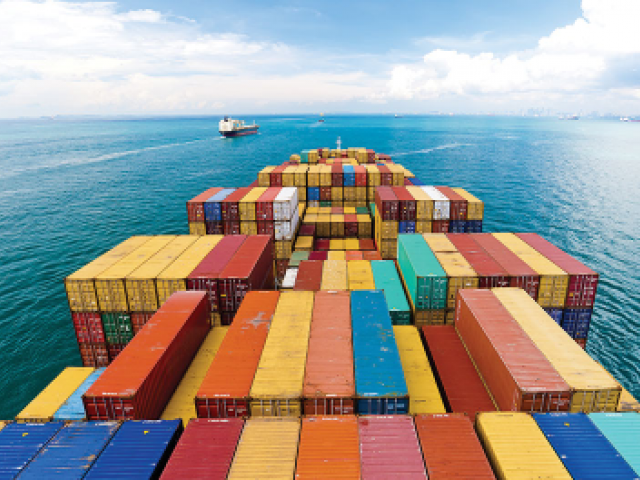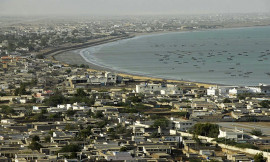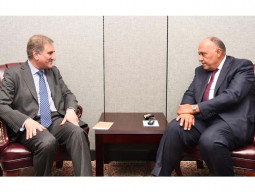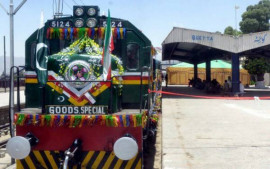
The major driver was the trade deficit, which widened from $19.2 billion in 2012 to $35.6 billion in 2017, according to data extracted from the ITC’s Trademap.org. Imports increased from $43.8 billion in 2012 to $57.4 billion in 2017 and exports decreased from $24.6 billion in 2012 to $21.9 billion in 2017.
In June 2013, the real effective exchange rate (REER), reported by the State Bank of Pakistan (SBP), was valued at 104.35. In April 2017, it peaked at 127.44. However, the Pakistani rupee has further depreciated since December 2017, bringing it closer to its equilibrium value. REER in June 2017 was reported at 111.18.
Between July 2014 and June 2015, REER had increased by 8.83%. It increased by 5.54% in the prior fiscal year, FY14. In simpler terms, the rupee was kept above its equilibrium value between June 2013 and June 2018, making it cheaper to purchase goods from other countries. Furthermore, exporters lost their competitiveness against foreign competitors in the global market.
Today, with the rupee closer to its equilibrium value, exports have increased. This has positively impacted the trade balance, alleviating some of the concerns regarding the burgeoning current account deficit.
First, let us examine how the severe trade deficit for Pakistan, as reported by Trademap.org, is relative to other countries experiencing large trade gaps. With a deficit of more than $35 billion, Pakistan was ranked eighth in terms of the size of the trade deficit in 2017.
The trade deficit of Pakistan exceeds the total value of its exports. Even though the trade deficit was skyrocketing, the exports and imports (goods and services) as a percentage of GDP, as reported in the World Development Indicators by the World Bank, was the lowest for Pakistan in the region. Even with relatively higher levels of imports, the lack of exports has turned Pakistan into a relatively closed economy within the region.
The lack of export growth to accompany the high rate of import growth is a serious cause for concern. Pakistan had a trade deficit of $13.9 billion with China and $6.7 billion with the UAE in 2017. Moreover, it had a trade deficit of more than $1 billion with nine countries including Saudi Arabia, India, Thailand and Japan. In 2013, the trade deficit with China was $4 billion. Hence, the increase in CPEC-related imports was by far the most important factor in the rising trade deficit.
Product-wise imports
Considering the product classification by HS codes, which is followed by the Pakistan Customs, the imports of machinery and mechanical appliances increased from $3 billion in 2012 to $6.9 billion in 2017. Imports of electrical machinery increased from $2.8 billion in 2012 to $4.7 billion in 2017 while iron and steel imports increased from $1.8 billion to $3.4 billion.
However, there was a relatively smaller increase in the import of vehicles, which rose from $1.6 billion in 2012 to $2.7 billion in 2017, primarily as a result of the import of motor cars from Japan and Thailand. The most commonly imported cars are of smaller engine sizes, up to 1,500cc.
The fall in global oil prices between 2014 and 2017 led to a decrease in the import of mineral fuel. However, a recent shift in preference towards LNG and coal contributed to a surge in the value of imports of mineral fuels.
The demand for other products such as dry fruits, processed food and tea and coffee increased as well, primarily due to the overvalued exchange rate, but not to the extent of the aforementioned products. Palm oil has a larger share in imports than any other labeled under food items.
In essence, major contributors to the increase in imports are CPEC-related power machinery and construction material and equipment. As major projects are completed, the CPEC-related imports will decline. Food and luxury items constitute a smaller proportion of total imports into Pakistan. However, with rising fuel prices, fuel commodities will regain their share in the import bundle.
Efforts to curtail imports by increasing regulatory duties may divert imports into informal channels and create further challenges for the declining foreign exchange reserves.
Trade deficit shrinks as exports grow faster than imports
Exports of goods and services as a percentage of GDP for Pakistan have declined from 12.4% in 2012 to 8.2% in 2017, the lowest amongst major economies in the South Asian region. Exports of textile products, which have the largest share, have hovered around $13 billion. Bangladesh and Vietnam increased their textile exports by more than 70% during the same time period.
Both Vietnam and Bangladesh imported textile machinery at 145% more value than that for the textile machinery imported by Pakistan in 2017. Since 2010, imports of textile machinery into Pakistan have remained stagnant.
It is important to note that Pakistan was one of the top five importers of textile machinery in 2005. Bangladesh and Vietnam import primarily knitting machinery, while Pakistan imports mostly spinning machinery involved in upstream production.
‘Fourth industrial revolution to reshape govt, trade and health’
As Pakistan is a large cotton-producing country, investments in upstream textile production, such as cotton yarn, is likely. However, there is an urgent need to increase investments in downstream high value-added exports in the textile industry, such as garments and other finished products. The increase in exports in FY18 was primarily due to the utilisation of idle capacity in the textile sector.
The United Nations Conference on Trade and Development’s (Unctad) trade and development report 2018 predicts higher levels of uncertainty in global trade may disrupt trade volumes. Higher levels of tariffs are likely to have consequences for income distribution and aggregate demand.
However, Pakistan can seek to attract foreign investment that is likely to be relocated from such countries. In summary, the government must adopt the right set of policies to attract investment and tackle the current account deficit.
The writer is Assistant Professor of Economics and Research Fellow at CBER, IBA
Published in The Express Tribune, October 29th, 2018.
Like Business on Facebook, follow @TribuneBiz on Twitter to stay informed and join in the conversation.



































1713853507-0/MalalaHilary-(2)1713853507-0-270x192.webp)








COMMENTS (2)
Comments are moderated and generally will be posted if they are on-topic and not abusive.
For more information, please see our Comments FAQ